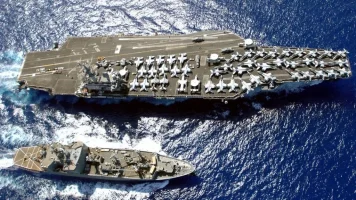- Views: 1K
- Replies: 16

India's ambitious Project-76, focused on developing a new class of diesel-electric attack submarines, is gaining momentum with a strong emphasis on indigenous components.
The Indian Navy is actively seeking locally developed diesel engines to power these submarines, marking a significant step towards self-reliance in critical defence technologies.
A private sector company, already experienced in developing industrial diesel engines, is in discussions with the Navy to provide the engines for Project-76 submarines.
These engines are expected to deliver 1231-1300 kW of maximum power and weigh around 6 tons each. Each submarine will require two such engines, primarily used to recharge lithium-ion batteries while operating at snorkel depth.
The Navy's preference for locally sourced engines stems from a desire to enhance supply chain reliability, reduce dependence on imports, and promote domestic industrial growth in the defence sector.
Once the technical specifications for these engines are finalized, the development phase will commence, marking a crucial milestone in India's naval modernization efforts.
Interestingly, the significance of these indigenous diesel engines extends beyond Project-76. Sources suggest that these engines could also be utilized in the Project-77 nuclear attack submarines (SSNs).
Even in nuclear-powered submarines, diesel engines play a vital role as backup power systems. They provide emergency power for critical systems like reactor cooling and can support emergency propulsion in case of a reactor malfunction. These engines can also supply electrical power for reactor decay heat removal, ensuring the submarine's safety and operability in critical scenarios.
This dual-use potential makes the development of these engines even more strategic. Not only will they power the diesel-electric submarines under Project-76, but they will also serve as a vital safety mechanism for future nuclear submarines under Project-77. This cross-application capability highlights the Navy's long-term vision of creating a reliable, versatile, and indigenous submarine fleet.
By prioritizing local development and production, India is strengthening its defence industrial base and reducing its reliance on foreign suppliers, ultimately enhancing its maritime capabilities and strategic autonomy.


